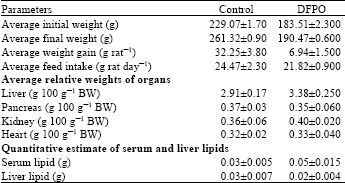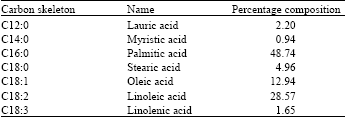Research Article
Evaluation of Effect of Dietary Supplementation with Dacryodes edulis G.Don Pulp Oil on Serum Lipid Parameters in Wistar Albino Rats
Department of Applied Biochemistry, Nnamdi Azikiwe University, Awka, Anambra State, Nigeria
F.U. Eneh
Department of Applied Biochemistry, Nnamdi Azikiwe University, Awka, Anambra State, Nigeria













